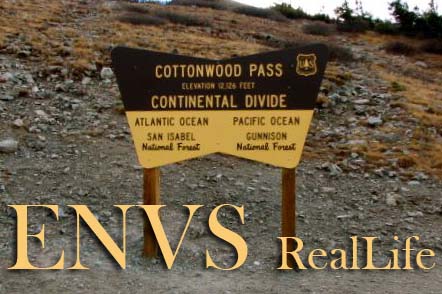Next we recorded these levels as well as the total water that had been pumped and then went up to the upper well. At the upper well, we had to record the same data as well as take a sample to test the chlorine level using a colorimeter to test the actual chlorine level and refill the SeaQuest tank. Then we went back down to the lower well to test the chlorine level there now that the water had been running through the new filters for a sufficient amount of time. Finally before we left we took a water sample to drop of at the Sangre De Cristo Lab in Alamosa to verify that the water was safe for distribution. When taking the sample, we had to be extremely careful not to get a contaminated sample. If the sample was contaminated by some outside source before the time it got tested, the water in the system would be contaminated which could lead to fines as well as other complications. There is more finesse to the regular duties of a water operator than one might imagine!
As an interesting side note, when we were driving down to Bear Creek, Rich told me an interesting story about a man named Ignaz Philipp Semmelweis. In the mid 1800s perpetual fever that often resulted in death was common in hospitals, in fact it almost seemed as if more people were getting sick from hospitals than were being healed. Semmelweis accidentally stumbled upon chlorine solution as a cleaning agent for doctors and their tools. It turned out that for some reason, the use of a chlorinated lime solution reduced the sickness and infections that were the result of medical procedures greatly. He had discovered chlorine as the ultimate disinfectant but he could not make this connection between the reduced mortality and the use of chlorine. He eventually published a book on his findings. But alas, Semmelwies' findings contradicted the prominent scientific and medical opinions of the time and pointed to the doctors as the culprits (when unknowingly, they were) and he was declared insane. He was committed to an insane asylum and died at the age of 47 after being beaten by the guards. After his death the significance of his findings was realized and continues to save millions of lives around the world to this day and even held to distribute safe drinkable water. Thanks Ignaz!

Ignaz Philipp Semmelwies (1860)
http://en.wikipedia.org/wiki/Ignaz_Semmelweis#Response_by_the_medical_community




